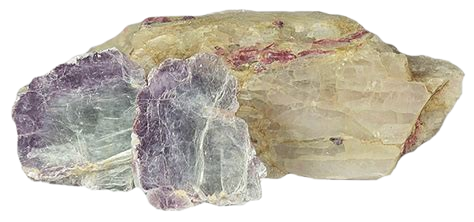🪨 Lithium

Name: Lithium
Type: mineral
Rock_type: sedimentary
Atomic_number: 3
Element_symbol: Li
Origin_countries: Bolivia, Chile, Argentina
Uses: batteries, electronics, electric vehicles, energy storage
AKA: white gold
Origin & Location
-
Primary source(s):
- Bolivia: Salar de Uyuni
- Chile: Salar de Atacama
- Argentina: Salinas Grandes, Hombre Muerto
-
Geological context:
Found in salt flats (salars) where lithium-rich brine lies beneath the surface. These form in high-altitude basins in arid zones, where volcanic minerals weather into groundwater and get trapped.
Uses
Uses may be industrial, cultural, nutritional, etc.
-
Used in:
- Lithium-ion batteries (phones, laptops, EVs)
- Energy storage systems for renewables (solar/wind)
- Aerospace alloys, medications (e.g., bipolar disorder treatment)
-
Global demand drivers:
- Surging electric vehicle and solar/wind adoption
- Push for net-zero carbon economies
- Strategic mineral classification by USA, EU, China
🗺️ Story of Discovery & Exploitation
-
Initial discovery:
Indigenous communities in the Andes have known the salars for centuries, but Western interest surged in the 20th century. Scientific identification of lithium-rich brines began around the 1970s. -
Colonial/modern extraction:
Unlike silver or gold, lithium wasn’t extracted during colonization. But modern extractivism is neo-colonial: foreign companies (especially U.S., Australian, Chinese) dominate operations and profits. -
Modern situation:
- In Bolivia, state-owned YLB has struggled with foreign partnerships and infrastructure.
- Chile allows private firms like SQM and Albemarle to mine under tight regulation.
- Argentina has opened its lithium to massive foreign investment, often bypassing Indigenous consent.
⛏️ Extraction Requirements
-
Mining method(s):
- Brine extraction: drill wells, pump saltwater to evaporation pools, isolate lithium over months
-
Environmental cost:
- Evaporation mining uses 2 million liters of water per ton of lithium
- Causes aquifer depletion in already dry regions
- Alters ecosystems critical to flamingos and traditional agriculture
-
Human cost:
- Indigenous resistance ignored or suppressed
- Lack of free, prior, and informed consent (FPIC)
- Little to no economic return for local communities